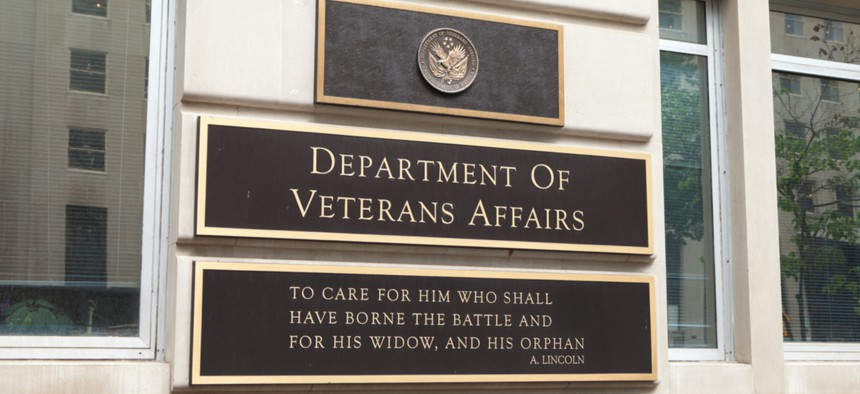Veterans Affairs Wasted Closer to $2 Billion On Failed IT Projects

Mark Van Scyoc/Shutterstock.com
The department misspent even more than government investigators initially believed in attempting to modernize its health records system.
The Veterans Affairs Department blew almost $2 billion over three attempts to modernize the electronic health records system it uses to provide care to 9 million veterans.
A recent audit by the Government Accountability Office identified $1.1 billion in wasted spending on two VA projects from 2011 to 2016, the Integrated Electronic Health Record and Veterans Health Information Systems and Technology Architecture.
Nextgov identified another $600 million VA spent on a third program, the HealtheVet initiative, which began in 2001 but was deemed a “failed" project, according to the audit, and canceled in 2010. The HealtheVet spending was not included in GAO’s audit because VA said it no longer possessed spending records. Agencies are required by the Federal Acquisition Regulation to keep contract records for six years after final payment, the audit notes.
An analysis by big data analytics firm Govini reveals nearly half of the $600 million spent on HealtheVet went to Hewlett-Packard for hardware, software and other IT services. The agency also paid a large amount to CACI, as well as Systems Made Simple, which Lockheed Martin bought and then spun off as part of the IT business it sold to Leidos.
“It is truly amazing how much federal agencies spend on electronic health records,” said Matt Hummer, director of analytics and professional services at Govini.
The audit and spending trail on failed IT projects is important as VA embarks on its fourth attempt to modernize its health IT and records systems—this one an expected $10 billion sole-source contract to Cerner Corp. Cerner ranked as the 13th highest-paid contractor in VA’s failed iEHR and VistA programs, according to GAO, receiving $13.4 million from the agency.
Cerner is also partnering with Leidos to build the Defense Department’s next-gen health records systems—valued at $4.3 billion over 10 years. When the Defense Department’s MHS Genesis platform and VA’s Cerner-built platform are fully operational, they are expected to be interoperable, or able to share records of soldiers and veterans seamlessly between each other.
However, as GAO’s audit warns, this is VA's fourth attempt at modernizing its health records system. In the previous three instances, the agency’s planning, management and execution led to billions of dollars wasted.
“The department’s dedication to completing and effectively executing the planning activities that it has identified will be essential to helping minimize program risks and expeditiously guide this latest electronic health record modernization initiative to a successful outcome—which VA, for almost two decades, has been unable to achieve,” the audit states.
"HealtheVet, a failed project initiated close to two decades ago and continued under the leadership of Presidents Bush and Obama, perfectly demonstrates why under President Trump the Department of Veterans Affairs is getting out of the software development business and starting VA’s transition to a commercial, off-the-shelf electronic health record system," said VA Press Secretary Curt Cashour. "It’s well past time for VA to focus on what it does best—taking care of Veterans—while leaving software development to tech industry professionals."
Editor's note: This story was updated with a comment from the Veterans Affairs Department.






